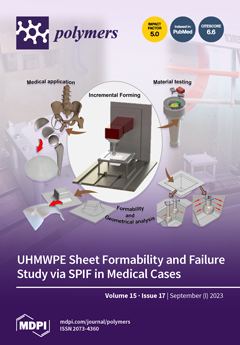Open AccessReview
Modern Approaches in Wounds Management
by
Simona-Maria Tatarusanu, Florentina-Geanina Lupascu, Bianca-Stefania Profire, Andrei Szilagyi, Ioannis Gardikiotis, Andreea-Teodora Iacob, Iulian Caluian, Lorena Herciu, Tudor-Catalin Giscă, Mihaela-Cristina Baican, Florina Crivoi and Lenuta Profire
Cited by 8 | Viewed by 5419
Abstract
Wound management represents a well-known continuous challenge and concern of the global healthcare systems worldwide. The challenge is on the one hand related to the accurate diagnosis, and on the other hand to establishing an effective treatment plan and choosing appropriate wound care
[...] Read more.
Wound management represents a well-known continuous challenge and concern of the global healthcare systems worldwide. The challenge is on the one hand related to the accurate diagnosis, and on the other hand to establishing an effective treatment plan and choosing appropriate wound care products in order to maximize the healing outcome and minimize the financial cost. The market of wound dressings is a dynamic field which grows and evolves continuously as a result of extensive research on developing versatile formulations with innovative properties. Hydrogels are one of the most attractive wound care products which, in many aspects, are considered ideal for wound treatment and are widely exploited for extension of their advantages in healing process. Smart hydrogels (SHs) offer the opportunities of the modulation physico-chemical properties of hydrogels in response to external stimuli (light, pressure, pH variations, magnetic/electric field, etc.) in order to achieve innovative behavior of their three-dimensional matrix (gel–sol transitions, self-healing and self-adapting abilities, controlled release of drugs). The SHs response to different triggers depends on their composition, cross-linking method, and manufacturing process approach. Both native or functionalized natural and synthetic polymers may be used to develop stimuli-responsive matrices, while the mandatory characteristics of hydrogels (biocompatibility, water permeability, bioadhesion) are preserved. In this review, we briefly present the physiopathology and healing mechanisms of chronic wounds, as well as current therapeutic approaches. The rational of using traditional hydrogels and SHs in wound healing, as well as the current research directions for developing SHs with innovative features, are addressed and discussed along with their limitations and perspectives in industrial-scale manufacturing.
Full article
►▼
Show Figures






